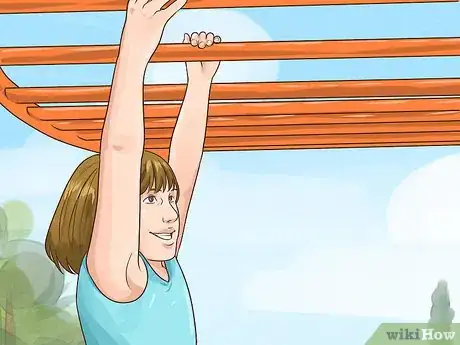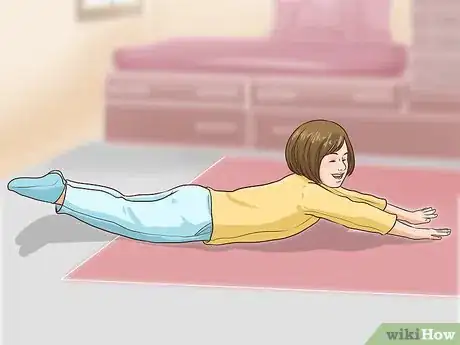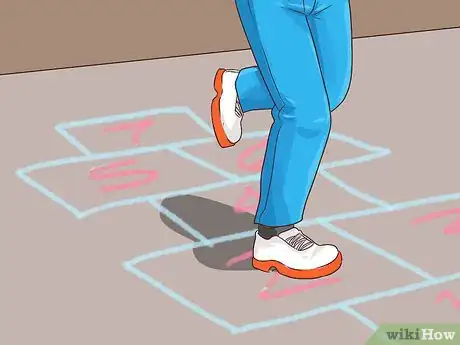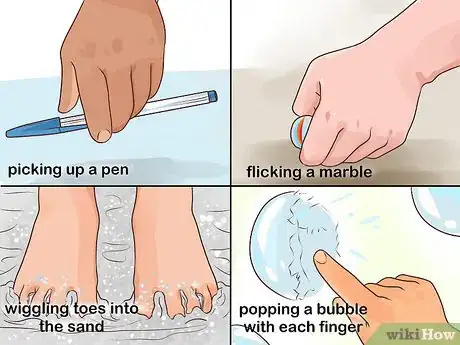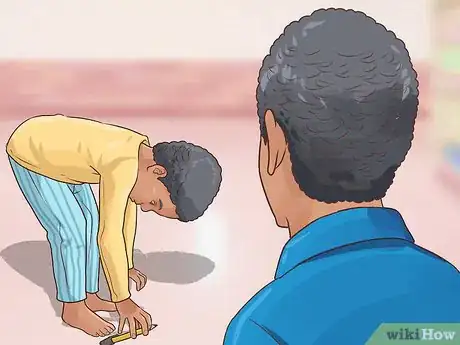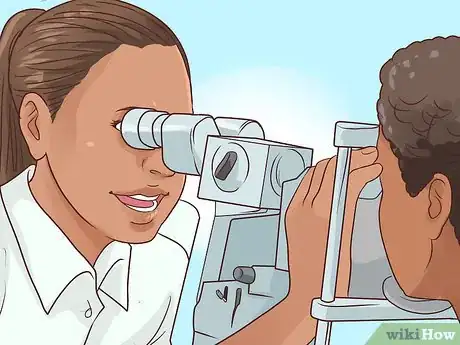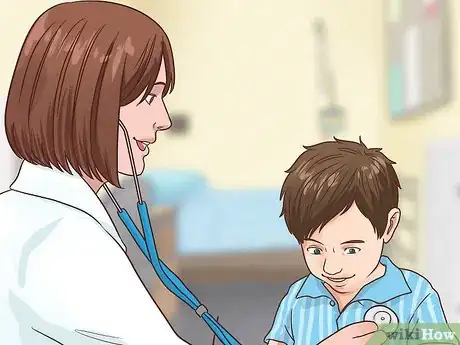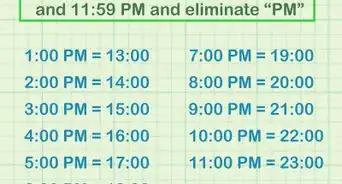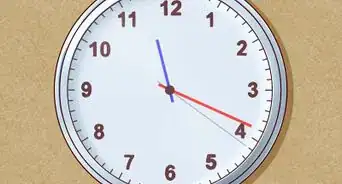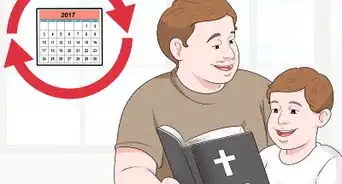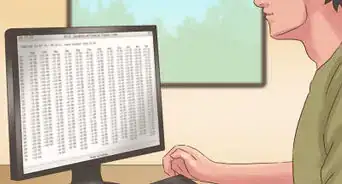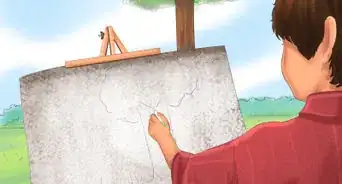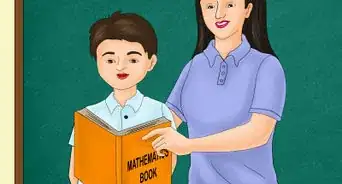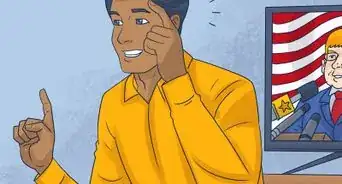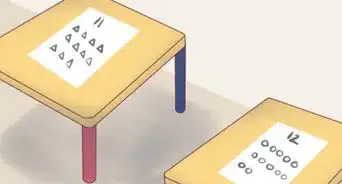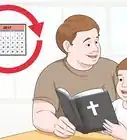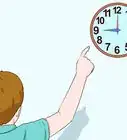This article was co-authored by Joel Warsh, MD. Dr. Joel Warsh is a board certified Pediatrician and the Owner & Founder of Integrative Pediatrics and Medicine in Los Angeles, California. With over a decade of experience, Dr. Warsh specializes in holistic and integrative medicine. He holds a Bachelor’s degree in Kinesiology and Health Sciences, a Master’s degree in Epidemiology and Community Health, and a Doctor of Medicine (MD) from Thomas Jefferson Medical College, where he was elected president of the Jefferson Pediatric Society. Dr. Warsh then completed his Pediatric Residency at Children’s Hospital of Los Angeles (CHLA), where he received the George Donnell Society Research Fellow.
There are 13 references cited in this article, which can be found at the bottom of the page.
This article has been viewed 63,683 times.
Coordination allows children fluid, stable movement while performing everyday tasks such as walking and biking. While children naturally have different rates of development, you can take action to improve coordination in children who lag behind. Performing strengthening exercises and motor-development work can go a long way toward ensuring your child’s coordination develops to its fullest potential.[1]
Steps
Strengthening the Body
-
1Improve their muscle strength. Strength training isn’t just for adults, but it looks a bit different when you’re trying to build strength in children. While weight-training is not advised for young children, you can employ exercises where children bear their own body weight more purposefully to improve coordination.
- Try to incorporate play into your child’s strength-building exercises, for example, swinging on the monkey bars or doing a “wheelbarrow,” where you hold the child’s feet while they walk forward with their hands.
- Tug-of-war, tumbling and tree climbing can also help your child build the muscle tone they need to develop better coordination.[2]
- You can also do yoga or Pilates with your child to improve their balance and core strength. Enroll in a class at a community center or watch DVDs or online videos at home. Doing yoga or Pilates moves with a gym ball can also be helpful.[3]
- Improving muscle strength also improves bone strength, which will give your child better balance.[4]
-
2Sign them up for endurance sports. Endurance sports provide a different kind of muscle training than the short bursts of exertion that promote brute strength. Sustained exercises at lower intensity tone your child’s muscles to aid the difficult work of performing tasks fluidly.[5]
- Swimming is a great endurance exercise to promote coordination because your child doesn’t risk falling and hurting themselves. Of course, always ensure your child is supervised. If your child is too young to swim, long walks or jumping rope can help build up endurance.
- Be sure to let your child have input on the sport you enroll them in. If they enjoy it, they will be motivated to stick with it.
Advertisement -
3Promote their core strength through isometrics. Your child’s back and abdominal muscles support them in virtually every task they perform: getting dressed, climbing stairs and lifting a backpack, for example. Building your child’s core muscles will give their other muscles more support and control, increasing overall coordination.
- If your child is an infant or toddler, increase tummy time to strengthen back muscles and improve head control.
- If your child is a bit older, the “superman” stretch, where a child lies on their stomach and lifts their arms and legs off the ground at 5-second intervals, can be a fun, superhero-friendly approach to core training.[6]
Practicing Skills that Promote Coordination
-
1Use play to practice gross motor skills. Gross motor skills are any skills that encompass large sweeping movements of the body. You can tap into some normal play activities your child already enjoys to elevate their gross motor skills.[7]
- For example, swinging on the swings and playing hopscotch both promote the kinds of large multi-muscle movements required to build coordination.
- If your child has trouble propelling themselves on the swing or hopping well, try playing pretend. Ask them to mimic various animals with their bodies. While their squatting like a duck or pawing like a dog may not be much at first, they can incorporate more movements as they become increasingly coordinated. Make believe will feel more like fun than exercise, too.
-
2Exercise fine motor skills with small objects. Fine motor skills are any precise smaller movements, such as picking up a pen, flicking a marble or wiggling toes into the sandbox.[8] Fine motor skills can also be exercised well through play. Try playing with bubbles, for example. Ask them to try popping a bubble with each individual finger.[9]
- Fine motor skills also help hone hand-eye coordination, a vital part of overall coordination. Try scattering some buttons of different sizes and have your child practice moving them from hand to hand then putting them into a shoebox with a small slit in the top. You can also ask them to try putting pennies in a piggy bank or ask them to pick up small objects with tweezers.[10]
- This process of using the eyes to guide and control the hands will give your child more precise coordination skills for handwriting and other important tasks.
-
3Vary movements and their sequencing. In practicing both gross and fine motor skills, it is important to vary your child’s routines in order to yield the greatest improvement in coordination. Our bodies can learn to master one movement, if it is performed often enough, but true coordination comes from switching fluidly between different individual skills. Varying your child’s movements and training routine will help them reap the most benefits from these exercises.
-
4Encourage the mind-body connection through yoga or martial arts. If your child is particularly self-conscious about their inability to perform certain tasks, it can help them to practice body awareness through yoga or martial arts. These types of exercises promote focus and mindfulness as part of strengthening physical movements.[11]
- Yoga can also relieve stress, allowing your child better focus when tackling difficult tasks.[12]
Addressing Potential Medical Issues
-
1Speak to your child’s pediatrician about any concerns you have. If you think your child struggles with coordination due to developmental delays or other issues, make an appointment with their pediatrician. If necessary, they can refer your child to an occupational therapist.[13]
-
2Have your child’s hearing tested. Your child’s inner ear can have a profound effect on their ability to balance properly. Particularly if your child’s trouble with coordination comes after a head cold or illness of any kind, you should have their hearing examined. A licensed pediatrician can look in your child’s ears and perform an audiometric test to ensure everything is functioning normally.[14]
-
3Have your child’s vision tested. Visual deficiencies can make good hand-eye coordination and finding balance very difficult. A licensed optometrist or pediatrician can perform a thorough eye exam to ensure ocular motility or other issues aren’t partially to blame for your child’s poor coordination.
-
4Get your child tested for Sensory Processing Disorder. Studies show that children who have Sensory Processing Disorder have trouble integrating all the information received from their senses to produce coordinated movements. A pediatrician can test for this disorder, whose hallmarks include avoiding over-stimulating environments and using too much or too little force to pick up objects.
- If necessary, a doctor can refer you to an occupational- or physical-therapy professional to help outline an appropriate course of therapy to address your child’s specific coordination needs.
- If your child has not already been diagnosed with Developmental Coordination Disorder—a marked delay in motor skills—talk to your pediatrician about it. Developmental Coordination Disorder differs from Sensory Processing Disorder in that it is not caused by any neurological or medical condition. Exercises and motor-control activities, such as those described here, can be of great help in improving Developmental Coordination Disorder.[15]
Expert Q&A
-
QuestionCan you explain how to develop children's coordination by building up movements gradually?
 Catherine Palomino, MSCatherine Palomino is a former Childcare Center Director in New York. She received her MS in Elementary Education from CUNY Brooklyn College in 2010.
Catherine Palomino, MSCatherine Palomino is a former Childcare Center Director in New York. She received her MS in Elementary Education from CUNY Brooklyn College in 2010.
Master's Degree, Elementary Education, CUNY Brooklyn College It’s great that you want to help build coordination in your child. It is important that you start any exercise program with a consult to your pediatrician to speak about your concerns and your plan of action. To build up coordination movements gradually, you can invite your child to begin with core stability movements, such as Yoga or Pilates. Your child should build up their program gradually proceeding to more complex coordination exercises once they feel confident in their mastery of basic movements.
It’s great that you want to help build coordination in your child. It is important that you start any exercise program with a consult to your pediatrician to speak about your concerns and your plan of action. To build up coordination movements gradually, you can invite your child to begin with core stability movements, such as Yoga or Pilates. Your child should build up their program gradually proceeding to more complex coordination exercises once they feel confident in their mastery of basic movements. -
QuestionWhy is it important for children to take personal responsibility for their own fitness and motivation?
 Community AnswerWithout motivation, it is nearly impossible to be successful in any aspect of life, work, family, relationships, etc., so the sooner a child learns how to motivate themselves, the better. Also, if children get in the habit of exercising (fitness) early on, they will be more likely to continue the practice, and less likely to become obese in adulthood and/or suffer from things like heart disease, diabetes, high blood pressure, etc.
Community AnswerWithout motivation, it is nearly impossible to be successful in any aspect of life, work, family, relationships, etc., so the sooner a child learns how to motivate themselves, the better. Also, if children get in the habit of exercising (fitness) early on, they will be more likely to continue the practice, and less likely to become obese in adulthood and/or suffer from things like heart disease, diabetes, high blood pressure, etc. -
QuestionWhat can I use in class to promote and develop coordination?
 Community AnswerBe safe, be present, be respectful, be responsible, and always be professional.
Community AnswerBe safe, be present, be respectful, be responsible, and always be professional.
References
- ↑ https://childdevelopment.com.au/areas-of-concern/gross-motor-skills/balance-coordination/
- ↑ https://www.webmd.com/fitness-exercise/features/encouraging-exercise-in-your-kids#2-4
- ↑ https://theinspiredtreehouse.com/child-development-core-strengthening-for-kids/
- ↑ https://www.ncbi.nlm.nih.gov/pubmed/16702776
- ↑ http://billplakemusic.org/2015/08/13/strength-coordination-and-endurance-avoiding-confusion/
- ↑ http://www.moveforwardpt.com/Children/Activities/Detail/superman
- ↑ Joel Warsh, MD. Board Certified Pediatrician. Expert Interview. 2 February 2021.
- ↑ Joel Warsh, MD. Board Certified Pediatrician. Expert Interview. 2 February 2021.
- ↑ http://www.babycentre.co.uk/x6562/whats-the-difference-between-fine-motor-and-gross-motor-skills
- ↑ https://www.toolstogrowot.com/therapy-resources/fine-motor-skills/using-tongstweezers
- ↑ Joel Warsh, MD. Board Certified Pediatrician. Expert Interview. 2 February 2021.
- ↑ http://www.thehealthsite.com/diseases-conditions/6-yoga-poses-for-better-balance-and-coordination/
- ↑ https://kidshealth.org/en/parents/occupational-therapy.html
- ↑ https://web.archive.org/web/20180308114718/http://balanceandmobility.com/for-patients/testing-balance-disorders
- ↑ https://canchild.ca/en/diagnoses/developmental-coordination-disorder
